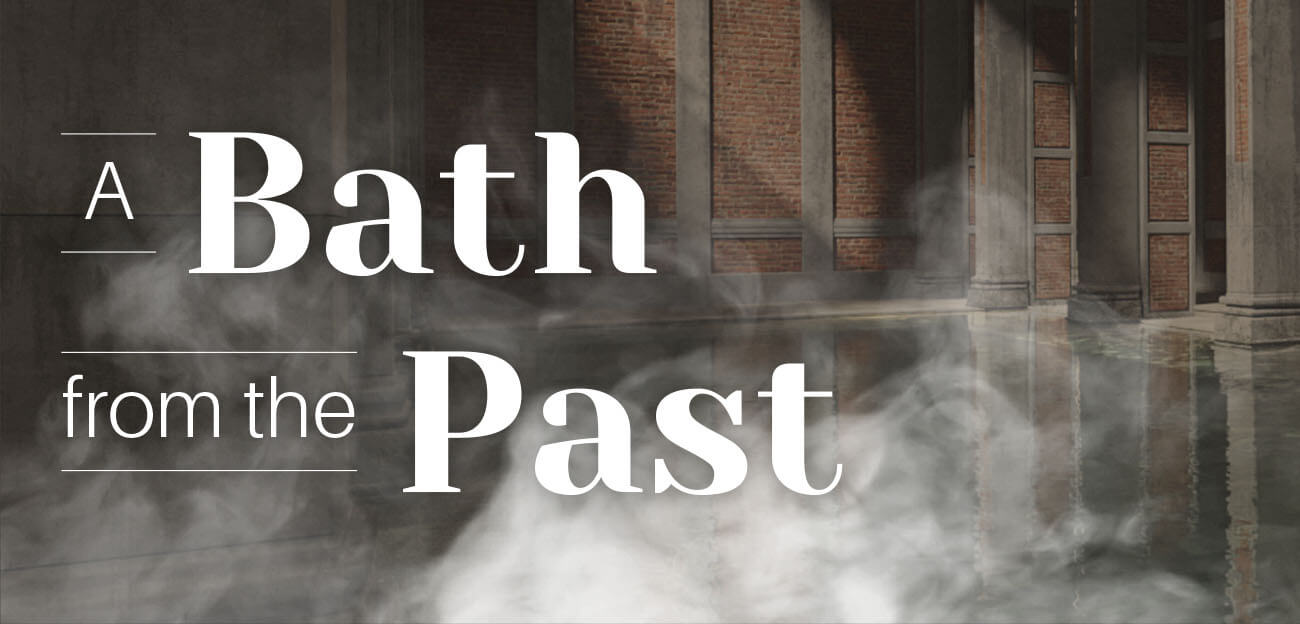
What's the greatest tub you've ever bathed in? A good bath leaves a (hopefully invisible) mark on your body or soul - whether it's the space, the layout, or the sheer luxury of your surroundings that make the biggest impression.
But the greatest baths in history are not mere tubs, nor even bathrooms, but whole complexes devoted to the art of the soak. The first public baths to be constructed may be those of the Indus people in around 2500 BC. The Ancient Egyptians and Greeks developed their own public bathing culture, and the Romans took the construction of their famous thermae to decadent new levels.
Ancient public baths from around the world are remembered for their serene atmosphere and beautiful architecture. But to visit these grand old spaces today - many in ruins - is to experience just a shadow of what they once were. QS Supplies believes in the importance of fabulousness in a bathroom, so we've created digital 3D renders of how seven of humanity's greatest ever public baths once looked.
1. Baths of Caracalla, Rome, Italy (Built 216 AD)
Ever thought of expanding to a 300-acre bathroom? To be fair, Ancient Rome's most famous and second-largest public bathing house was not just a bathroom but a sprawling, multi-use complex that also housed libraries and shops. Still, the free-to-use baths were the main attraction: up to 8,000 Romans would use them each day.
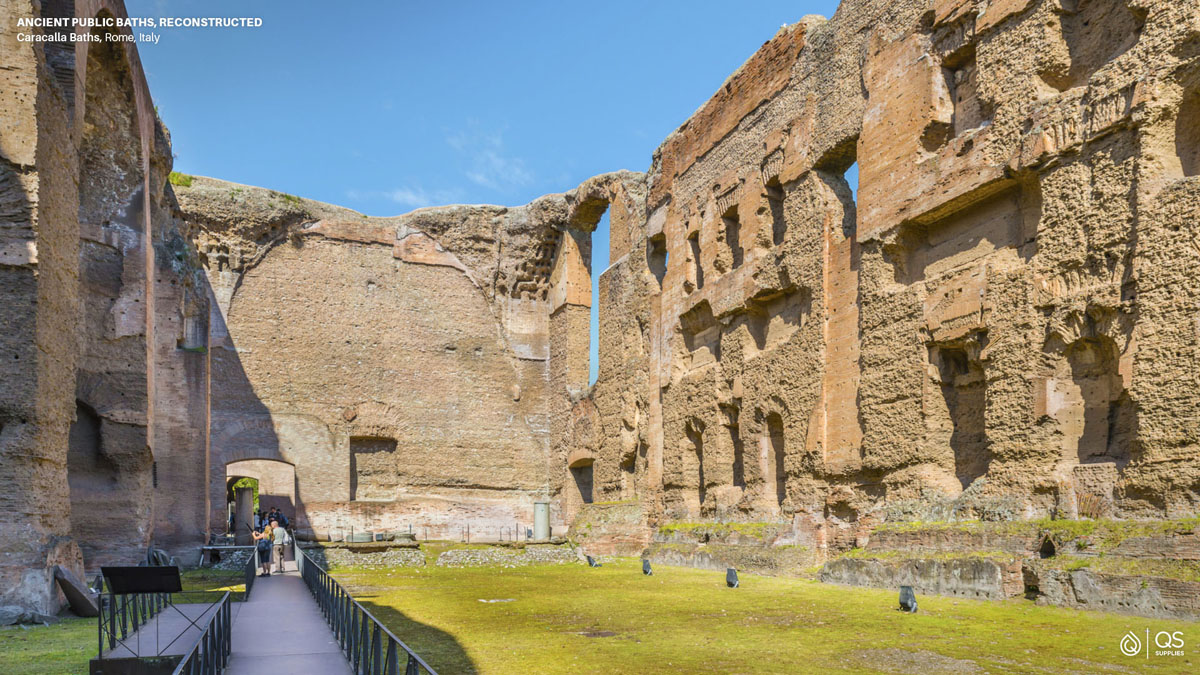
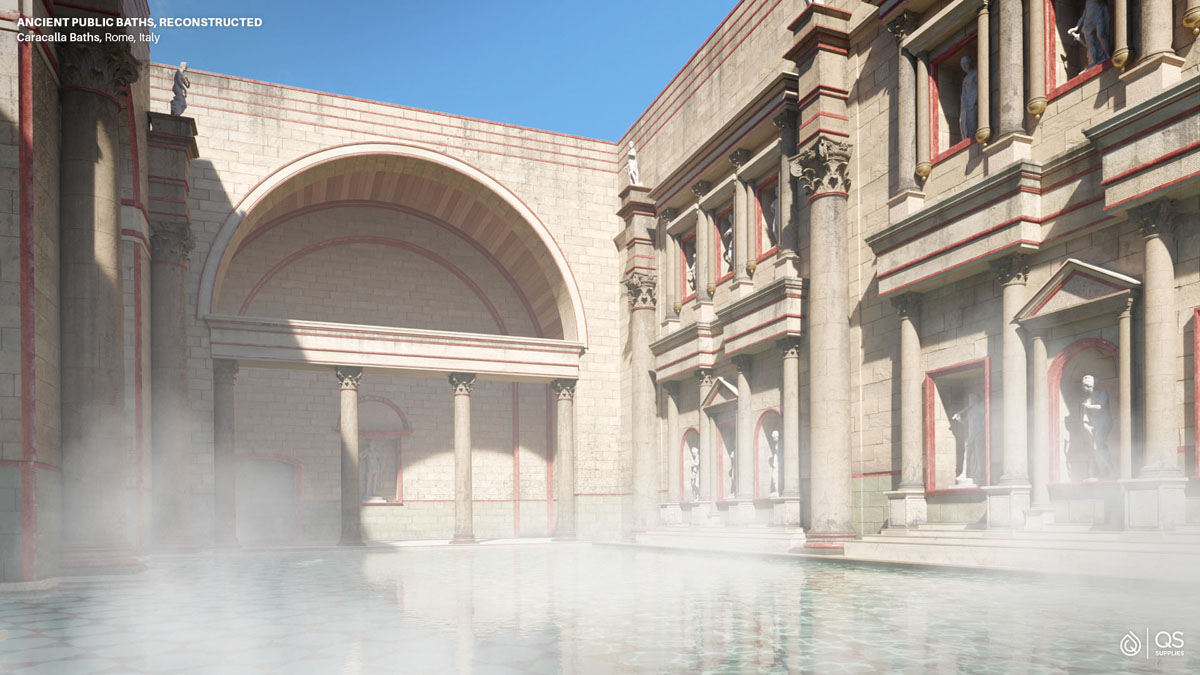
An ingenious heated plumbing network warmed both the waters and the floors and walls of the other rooms. The steam rose past 10-foot statues and granite columns to a glass ceiling overhead. Marble walls featured mosaics and paintings, while the doors were in gilt bronze.
2. Great Bath, Mohenjo-Daro, Pakistan (3rd millennium BC)
One of the earliest-known public baths in history is this Indus 'tub,' a "watertight pool called the Great Bath, perched on top of a mound of dirt and held in place with walls of baked brick." The tank is 12 x 7 metres wide, plunging to a depth of 2.4 metres, with a staircase at each end. It was rediscovered during the excavation of the site in the 1920s.

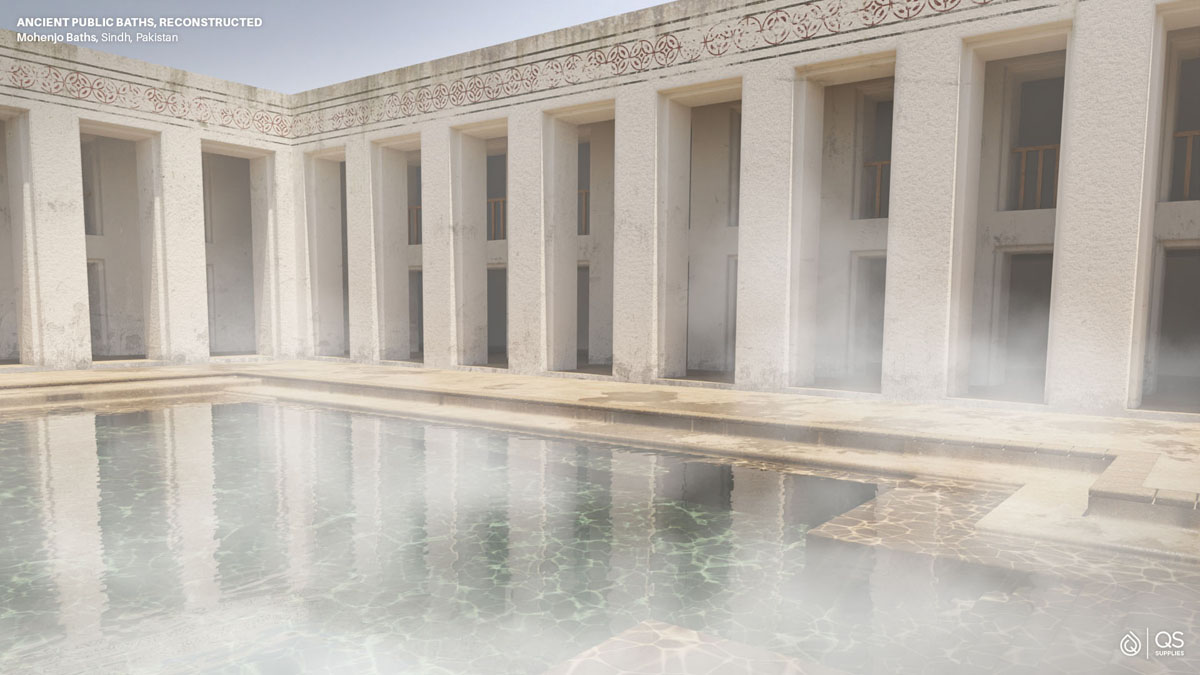
Positioned at the highest point of this now "faceless" Indus city, the Great Bath may indicate the religious and/or cultural importance of cleanliness to this ancient people - particularly since nearly every private home also had its own bath and plumbing.
3. Hadrian's Villa, Tivoli, Italy (110 AD)
Also known as Villa Adriana, Emperor Hadrian's luxurious home complex was built around its bathing complex, which was used by his family and 'inner circle.' Hadrian's baths were carefully constructed to take advantage of the warmth of the passing sun, and the structure was positioned to give a sense of leisure to the wider estate.
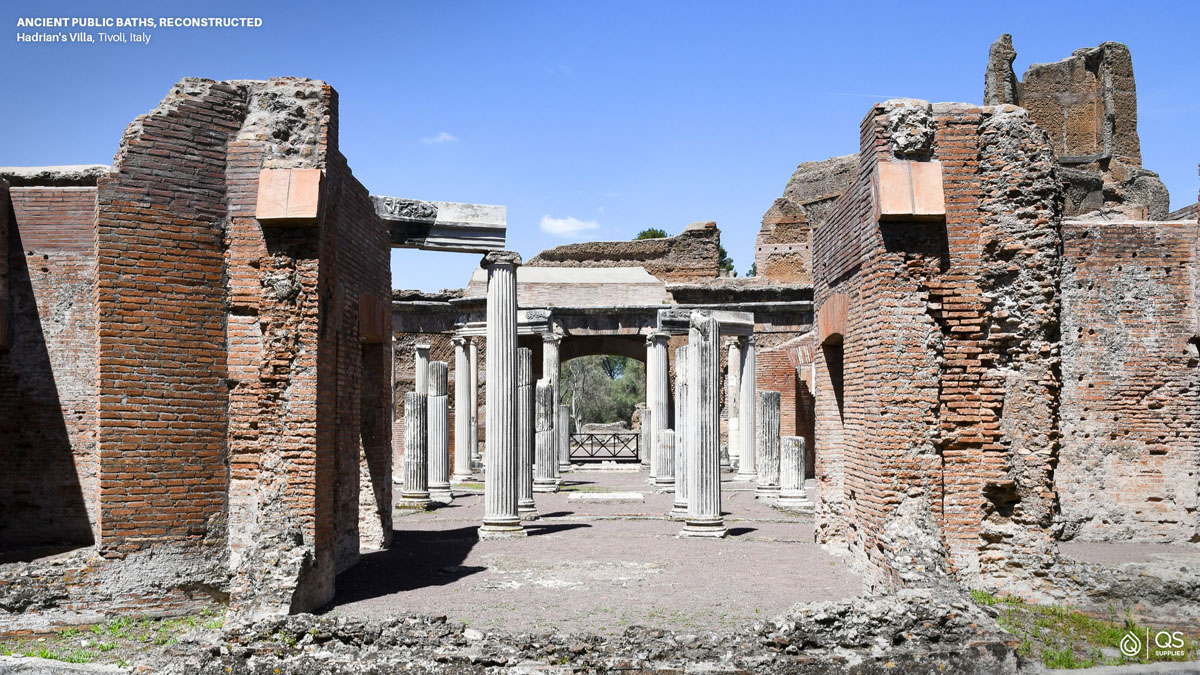
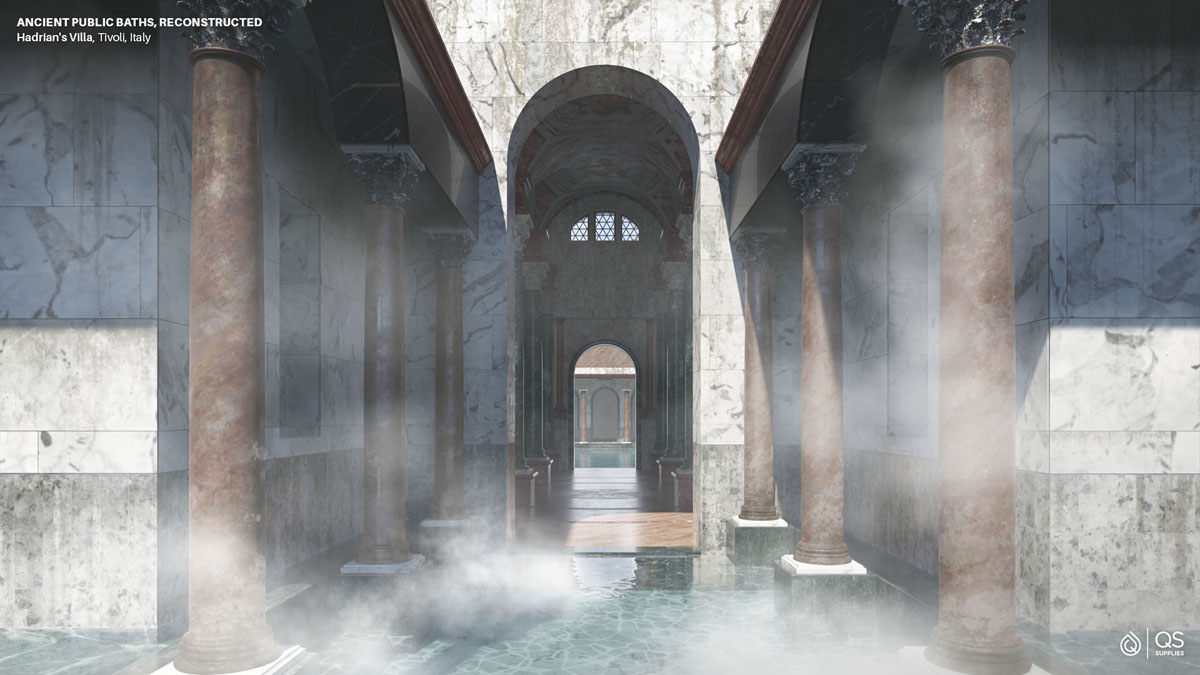
The baths featured a range of temperature options controlled by an under-floor heating system. Romans would work out in a courtyard called a palestra before descending through the temperatures from a hot caldarium to a warm tepidarium, a circular sauna called a laconicum, and finally, a cool rinse in a frigidarium.
4. Basilica Therma, Sarıkaya/Yozgat, Turkey (2nd century AD)
The Romans built the Basilica Therma in the second century AD at the site of a celebrated "thermal and healing fountain," which continues to run today. The façade was built with marble in the Corinthian order, and the pool was lined with marble, too, while the interior walls were limestone.

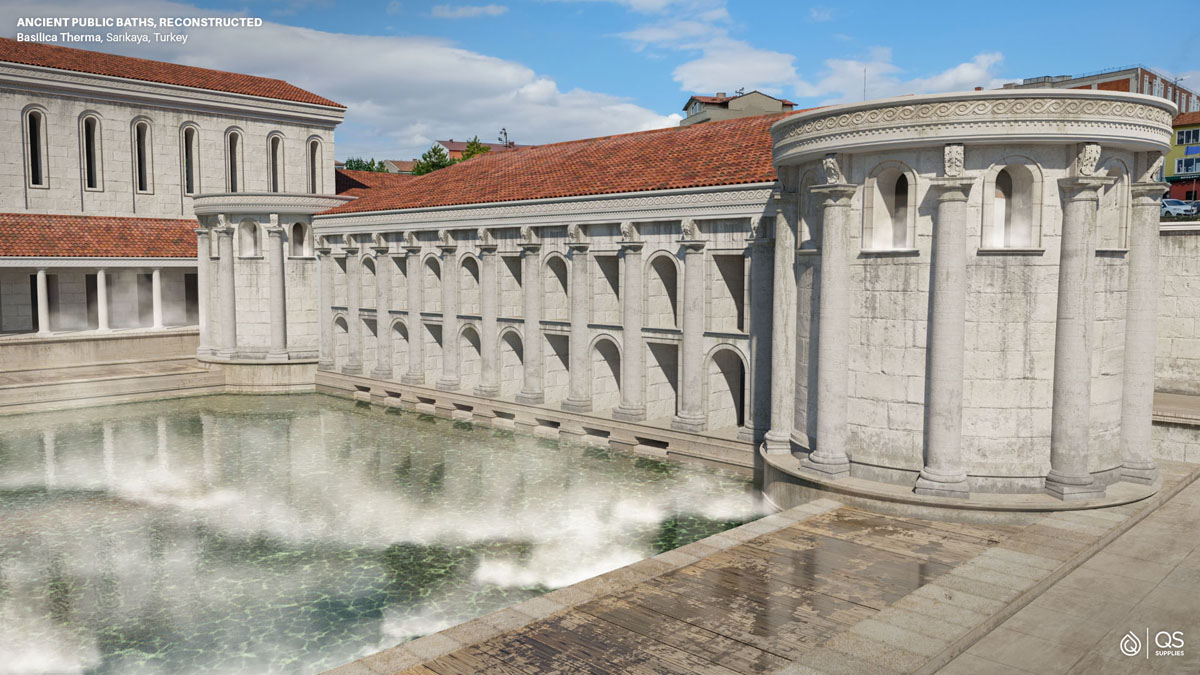
The baths are decorated with both Greek and Roman goddesses, including one with a snake that appears to represent health. There is also a large Christian Baptismal font. The water in the main thermal bath evens out naturally at around 45 degrees centigrade.
5. The Roman Baths of Odessos, Varna, Bulgaria (2nd century AD)
The largest public bathroom in the Balkans once stood up to 22 metres high, with a 7000m2 footprint. Unlike other Roman baths, which had separate rooms for men and women, the Odessos baths were open to women before noon and men in the afternoon (after work). There was even a sort of locker room for men to stow their valuables if attending on the way home.
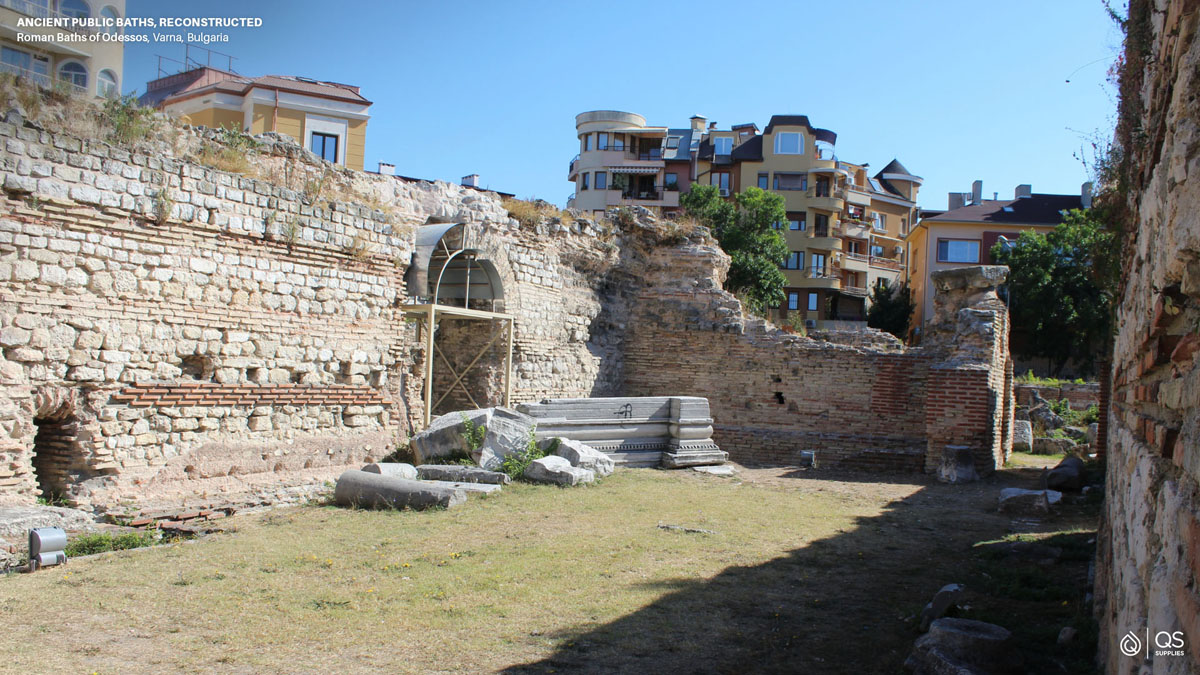

The Baths of Odessos feature statues to the Gods Heracles, Victoria, and Mercury and a shrine to health and healing Gods Asclepius and Hygia. The walls are built of carefully layered stone and brick, and large twin entrance halls insulated visitors from a sudden change in temperature (besides the change they desired when hopping from the caldarium to the tepidarium).
6. Barbara Baths, Trier, Germany (2nd century AD)
The ruins of this massive Roman bath complex were developed into a castle in the Middle Ages, before being dismantled for building materials. But at their height, the Barbara Baths were enormous: four stories high in places, with a 42,000m2 footprint (equal to six football pitches.)
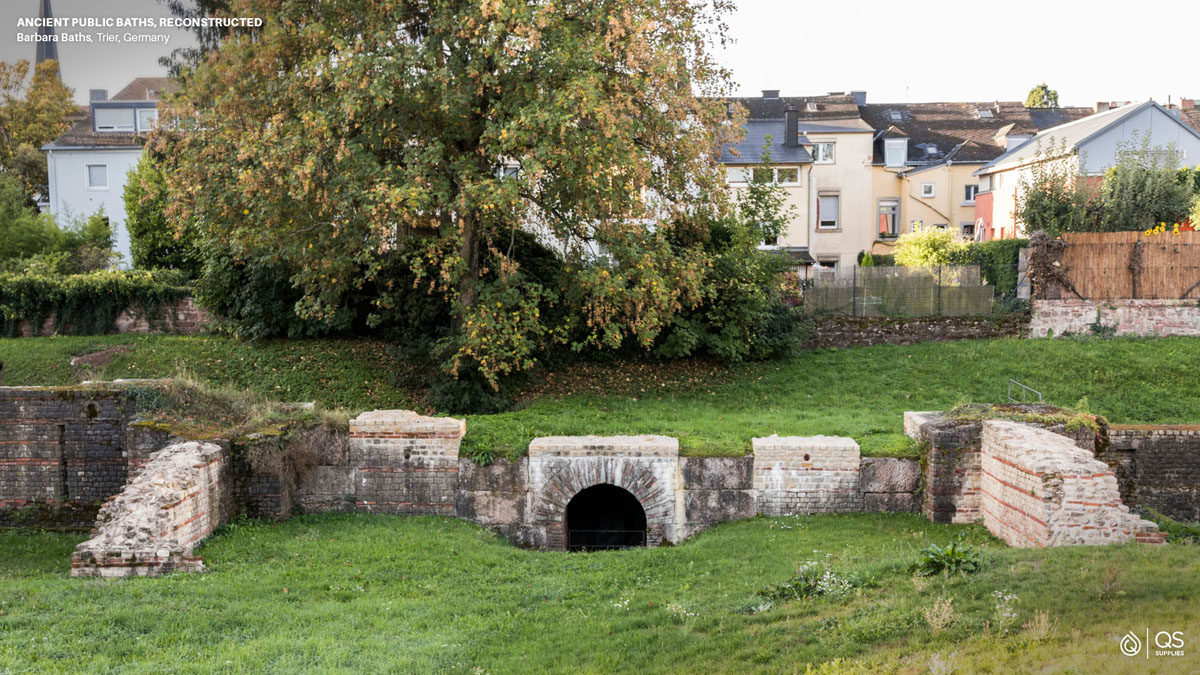
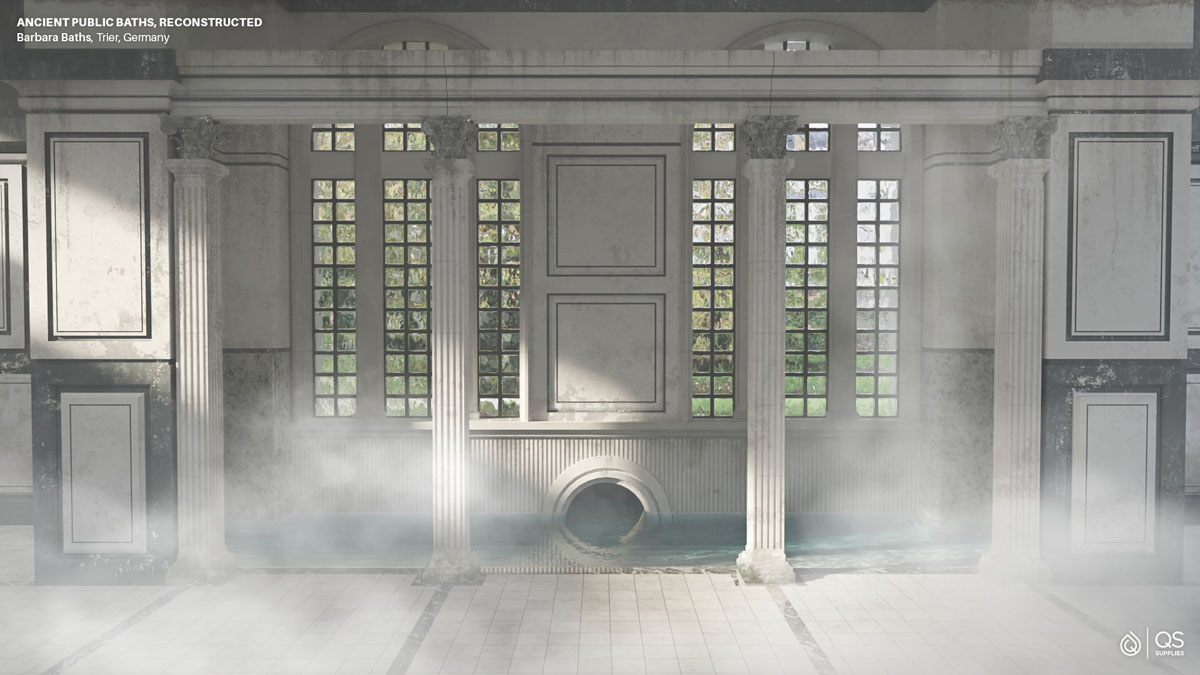
The original complex featured libraries, shops, restaurants, and beauty salons in addition to the marble-lined pools and saunas and marine grottos. Today, on-site reconstructions hint at what life must have looked like here, but the ruins are so complete that visitors can make out a cross-section-like view of the foundations, service tunnels, and heating and plumbing systems.
7. Roman Baths, Bath, England (60-70AD)
Northern Europe's best-preserved ancient baths are so fundamental to the English sense of place that we named the city after them. While the Romans knew the city as Aquae Sulis (named after the underlying spring - which may have been in use since the time of the Iron Age Britons), the Anglo-Saxon name Baðum (“at the baths”) prevailed, gradually becoming plain old 'Bath.'
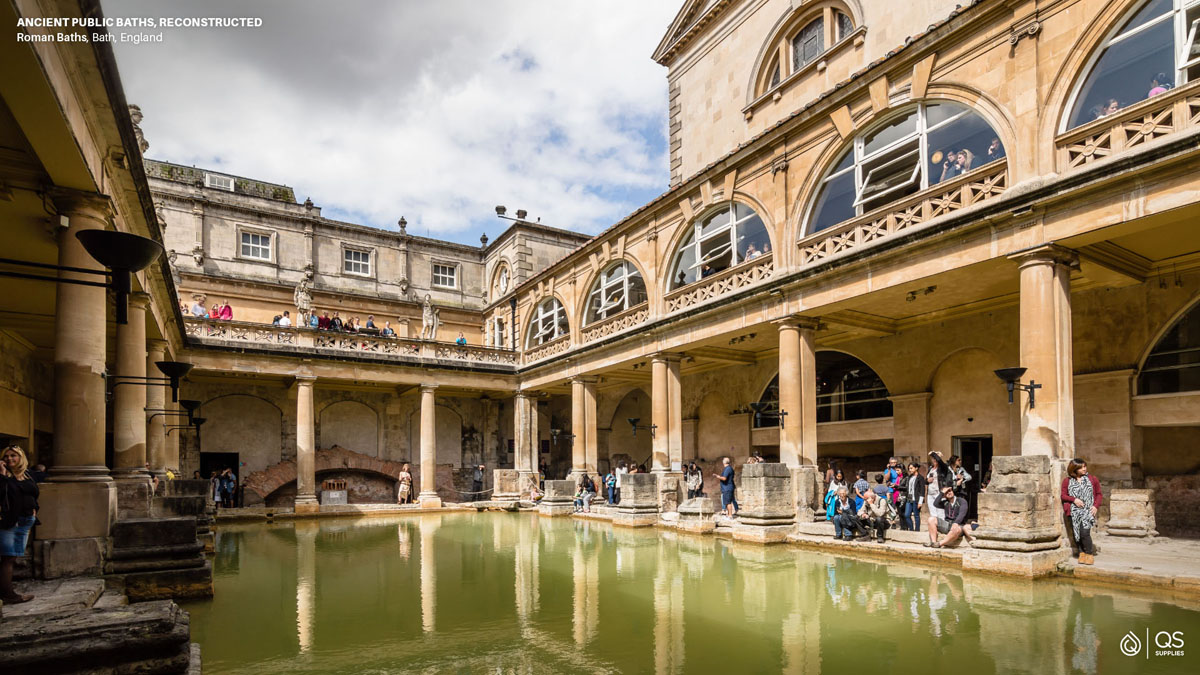
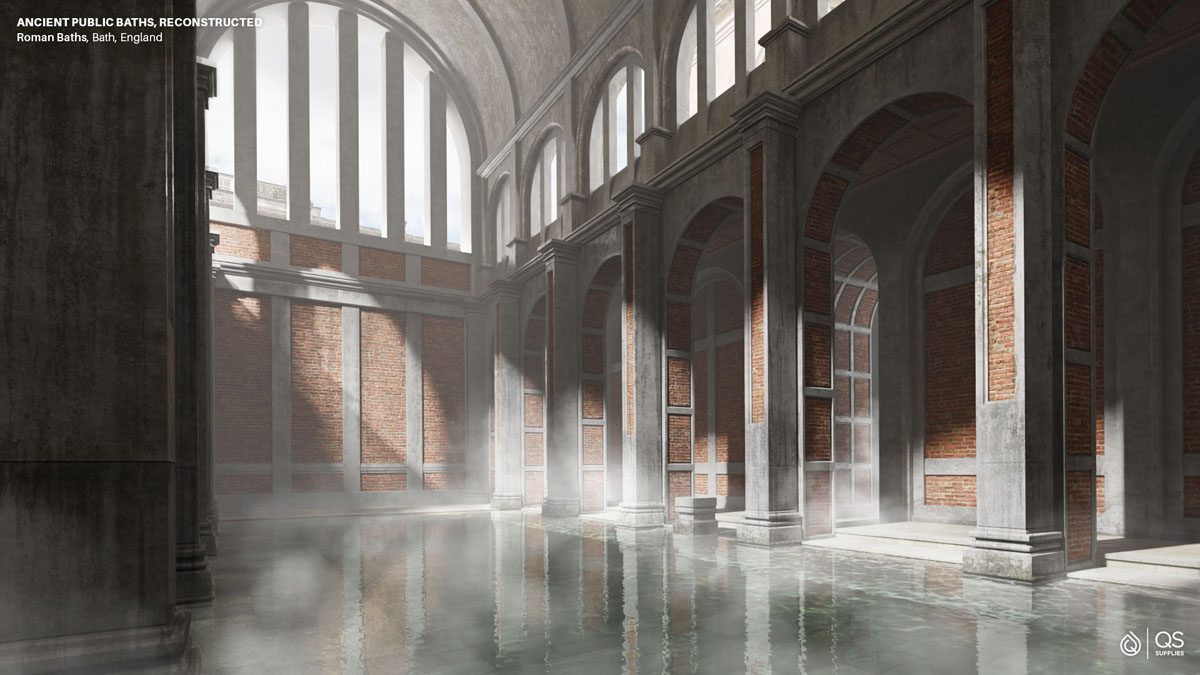
But the baths of Bath were anything but plain. For a start, unlike many Roman baths, they featured a naturally heated Great Bath for actual swimming, as opposed to just soaking. The Great Bath is insulated with 45 thick sheets of lead, with a ceramic ceiling supported by pillars that go right into the water. The complex also featured a 'dry sweating room' called a Laconicum and a suite of plunge pools, including a 1.6m deep circular cold bath.
Baths on the scale of these lost ancient complexes are rarely built today - and bathrooms of this splendour remain the preserve of the obscenely wealthy. But with imagination, good taste, and the resourcefulness to track down a bargain fixture or fitting, there's no reason your next refurb project shouldn't leave you with a bathroom to remember.
Although the bathtubs we offer can't compete with the vastness, splendour and grandeur of these ancient baths, but they can help you relax, rejuvenate and refresh. Make a splash with either bold or minimalist models from our humungous collections, which include back-to-wall baths, corner baths, straight baths and roll-top baths.






